POOL REPLASTERING
Our Step by Step Pool Replaster Process
Areas We Serve
Pool Replastering FAQs
How much does it cost to replaster a pool?
The average cost of pool replastering with mini pebble is about $8,000. An attached spa adds about an additional $900. This includes draining, chip out, applying the pebble, the acid wash, installing new directional eyeball and main drain fittings, and performing the startup.
How often should you replaster a pool?
Assuming that your swimming pool is properly maintained and is run with the ideal water chemistry, a pool plaster should last you around 7 years (pebble lasts closer to 15-20 years). However, several factors should be considered with the timing for your pool replaster, like the manifestation of wear and tear, cracks on the plaster, visible stains, peeling off of the plaster, and other signs of structural damage. Should any of these be perceptible and recognizable before the 7-year mark, it’s recommended that you seek the advice of a pool professional about replastering your pool.
How long does it take to replaster a pool?
The project will depend on how big the pool is and on how much work is to be done to have the pool replastered. Nevertheless, an average replastering project is usually spread out over about 2 weeks. It’s not 2 weeks worth of work; it’s just spread out over about 2 weeks as we coordinate with other jobs, order material, let things dry, etc.
Is pebble better than plaster?
Here are a few fast facts to help us understand the difference between the average pool plaster and pebble.
Pool plaster facts:
- The average plaster is made of white cement and aggregates.
- Pool plasters usually last 7 years given that you have a pool running under ideal conditions.
- Pool plaster is normally white but can be had in various colors with the use of colored pigments.
- Pool plaster is inexpensive compared to the other options.
Pebble facts:
- Pebble is made from a variety of high-quality and specially formulated cement with a similarly special blend of aggregates.
- Compared to the average swimming pool plaster, pebble lasts for an average of 15-20 years.
- Pebble comes in various finishes, often resembling the bottom of a riverbed.
- Pebble can be expensive, especially for a larger pool.
Overall, in terms of quality, a pebble finish can be considered as a better option than the average pool plaster. It lasts longer with fewer signs of wear and tear and can provide additional features like adding just the right amount of traction to prevent slippage when in the pool area. However, it does come with a price.
The swimming pool industry is an industry that gives you what you pay for. This only means that you get the most out of every penny you spend with pebble, making it a viable pool investment.
Do I need a permit to replaster my pool?
Depending on where you’re located, a permit may or may not be required to replaster a pool. Generally speaking, as long as you do not make any changes to the structure of the pool, a permit is not necessary for Ventura County. In Los Angeles County, a permit is required, even if just doing a resurfacing. Both counties require permits if plumbing and electrical are being worked on.
Below is a summary of what you can expect with most swimming pool replastering and refinishing projects in Los Angeles and Ventura Counties such as Newbury Park, Thousand Oaks, Westlake Village, Oak Park, Agoura, Calabasas, Moorpark and Hidden Hills. Every project is different, so please keep in mind the schedule may vary a little while we go over your personal timeline during our consultation.
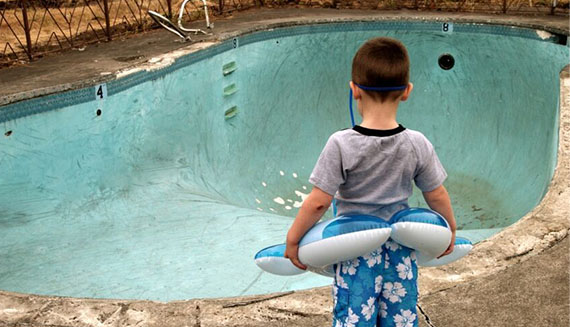
Drain the Pool
The first step of the swimming pool replastering process is draining your pool, which generally takes less than a day. You don’t have to be home for this as long as we can access your backyard. We will drain water to the street unless you would prefer it to be directed to a lawn or other landscaped area.
Chip Out Plaster
Once your pool has been drained completely, our team will thoroughly prepare your pool for replastering by chipping off the plaster, and removing the tile according to the resurfacing design you’ve chosen. To do this, we need to use jack hammers and pneumatic tools. We will do our best to cover and protect your backyard area. In order to ensure your property is 100% safe and clean, we suggest moving any patio furniture and potted plants to another area. Afterward, all of the debris is cleaned up and hauled away by us. The chip out process can be completed on the day following the draining.
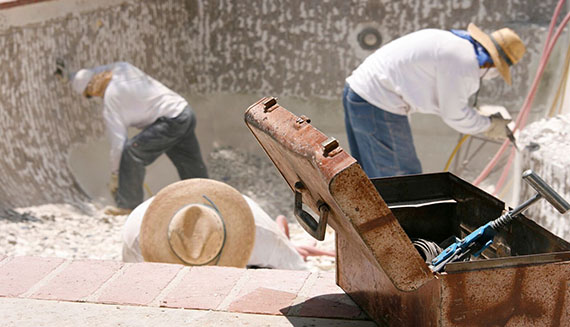
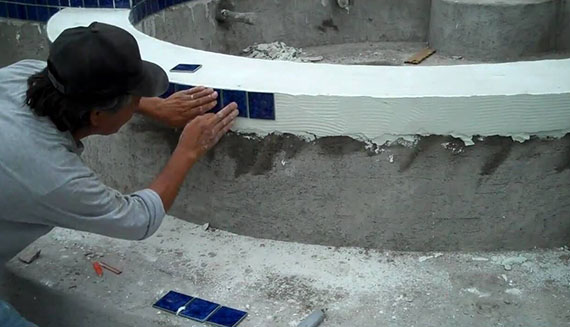
Pool Tile Work
After all of your old material is removed, our tile and masonry team will install any tile, coping, or decorative features that you’ve selected during the design process. This is done on day 3 and at this point, we’ll want to finalize all of the design details for the pool with you. You will need to select grout color and tile, and provide us with any special design requests.
Apply The New Surface
After double checking the seals of your plumbing as part of our final pre-plaster inspection, our team will return for pool replastering with your chosen surface material, which usually takes 1-2 days. Once the swimming pool replastering material has been applied, your pool can be refilled.
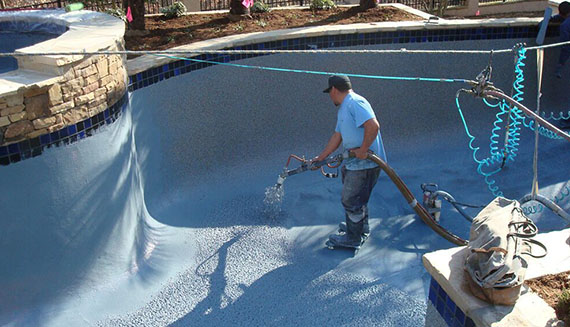
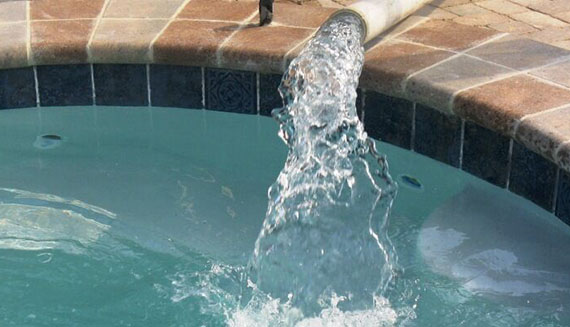
Pool Refill and Start-Up
Refill times can vary according to the size of your pool. Once filling is complete, the final step in resurfacing can begin, which is known as a start-up. This involves rebalancing all of the chemicals and allowing the new surface to cure properly.
Some of the steps included in this phase are:
- Testing the water for pH, alkalinity, calcium hardness and metals.
- Brushing the entire pool surface thoroughly twice daily in order to remove all plaster dust.
- Running your filter continuously for a minimum of 72 hours.
Everything You Need To Know About Pool Replastering
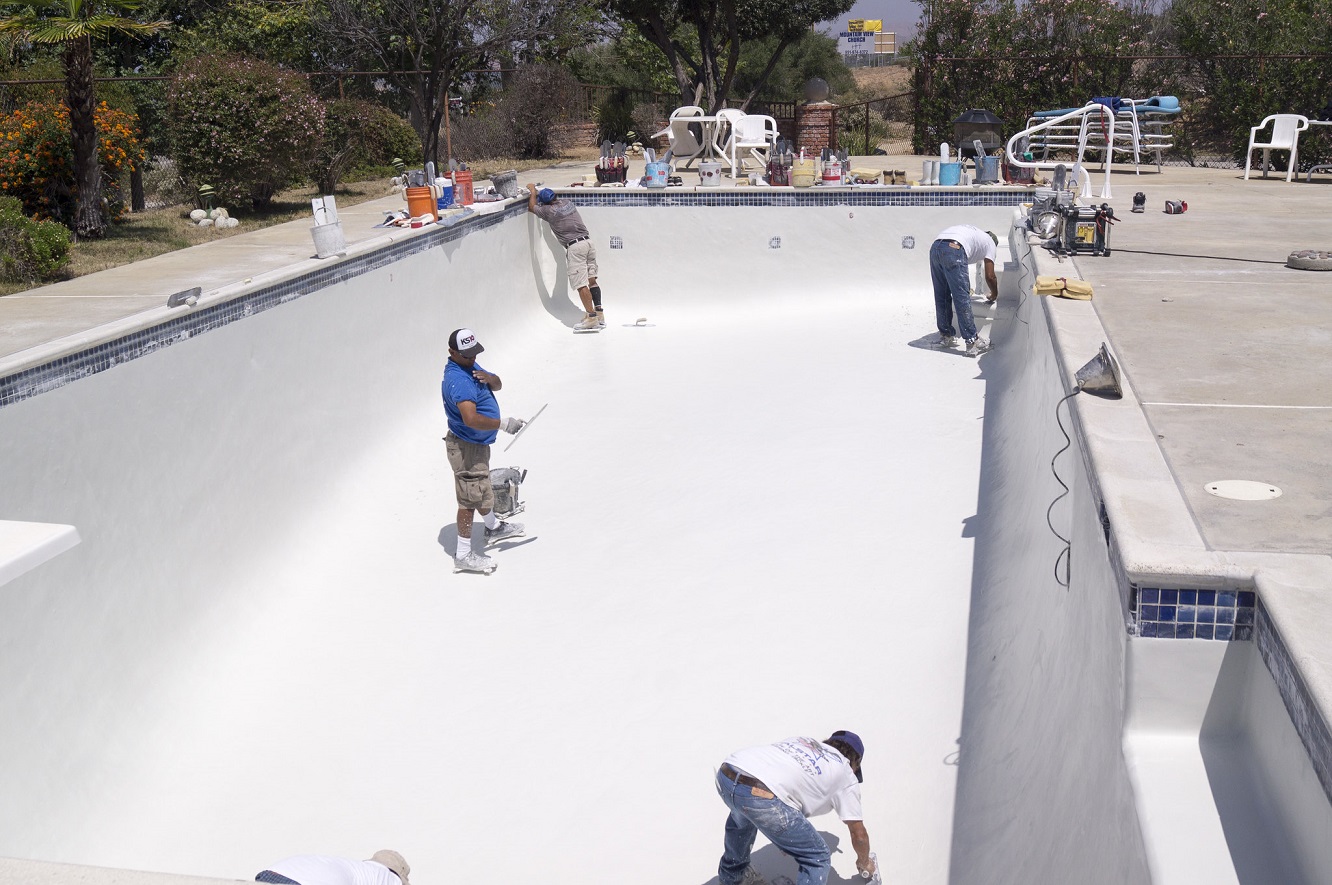
So you have finally installed that pool you always wanted to.
The kids are all excited, your spouse is ecstatic, and you feel the pride that should come with the domestic triumph you’ve just garnered.
Over time, your pool becomes the meeting place for all your friends and family. And naturally, you spend enough time, and money, to make sure that your pristine pool is the jewel of your house. And the envy of the neighborhood!
But for how long?
Pools are structures that have to be in continuous contact with water; due to this prolonged exposure to moisture, the edges and surfaces of pools tend to become rough and uneven over time.
This happens as the plaster slowly suffers wear and tear due to fluid friction; put simply, the water in your pool eventually eats away at the plaster coating that protects it.
And this can have potentially dangerous consequences. Ranging from contaminated waters to injured swimmers, a pool that is losing its plastering can become an accident zone very fast.
So the moment you see your pool showing signs of decay, you need to consider remodeling, resurfacing or pool plastering service it as soon as possible.
What’s Replastering?
Simply put, pool replastering is just what it sounds like: it’s applying a fresh layer of plaster to your pool walls and floor. The purpose of this is to guard the pool against damage from the elements.
Pool construction uses materials like gunite or concrete, which are porous by nature. This means if left unprotected, your pool will eventually drain out after a time. And then, you’ll have to refill it again.
To prevent this from happening, you need to apply at least a half-inch of plaster layer to your pool walls and floor. This prevents water drainage and also makes your pool look all smooth and shiny.
Why Do I Need To Replaster?
Because like everything good, plaster doesn’t last forever, and depending on the amount of maintenance, it can give you anything between 5 to 15 years of service.
After a considerable amount of time, your pool will start to show off its rough edges. This means that it is high time to replaster.
The following are some signs that tell you that your pool needs replastering. If you see one or many of these appearing in your pool, then don’t wait. Consider a replaster job immediately.
1. If You Begin To See Mineral Stains
Water contains several minerals, and these can stain your pool surface over time. For example, accumulating copper and iron can give your pool a rusty shade that begins to look unappealing. And as a result, no one will want to get into your pool. So if you see mineral stains in your pool, get ready to replaster.
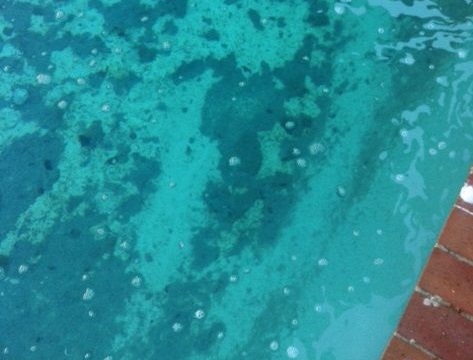
2. If The Gunite Starts Showing
As mentioned above, pool construction utilizes a base material of gunite or concrete; the plaster applied over this structure acts as a waterproof layer, and also provides visual appeal.
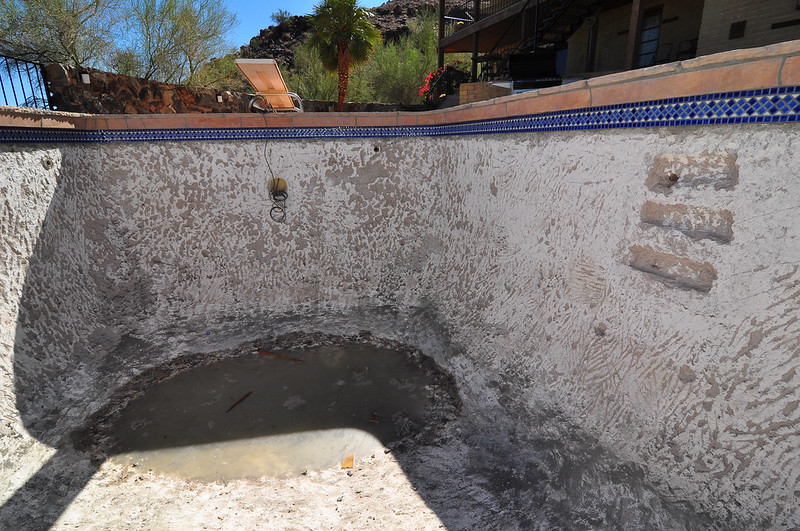
However, over time, the water itself is going to eat away at your plaster layer; and when it does, the structural components underneath are going to show.
So, if you are beginning to see layers of concrete or gunite peeping from underneath that patchy layer of plaster, then it’s time for a replastering job.
3. If Swimming Feels Off
This is perhaps the first thing that you’ll notice if your pool needs replastering. A gradual roughening of the walls and floor are symptoms that your pool plaster is getting eroded. This may result in your, or anyone else’s swimming costume getting scratched or cut when swimming.
Kids may also end up tearing their bathing suits against the rough surface of the walls. This poses a severe hazard to your family, and therefore, is one of the prime signals that your pool needs replastering.
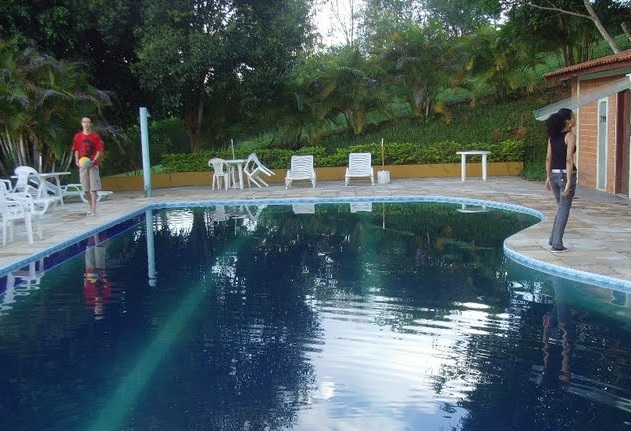
4. If Dirt Begins To Gather
Finally, one of the most tell-tale signs that your pool needs replastering is when you begin to notice dirt gathering in crevices and cracks of the pool. You may also start to see patches of dirt appear where previously there were none. When this happens, be ready to act immediately.
Now that you know what to look for, make sure you take immediate action and decide what you need to do. Of course, apart from replastering, you can also try other options such as tiling or patching; at the end of the day, the choice depends on the level of damage your pool has suffered, and the amount of money that you are willing to spend on it.
How To Replaster Your Pool
If and when you are sure that you need your pool to be replastered, then you can follow the steps below to get the job done.
1. Drain Your Pool
The first, and most crucial step while replastering your pool is ensuring it is devoid of moisture before you begin. So make sure to turn off any equipment currently in use in the pool, and then drain all the water. It’s best to use a sump pump to do the job correctly.
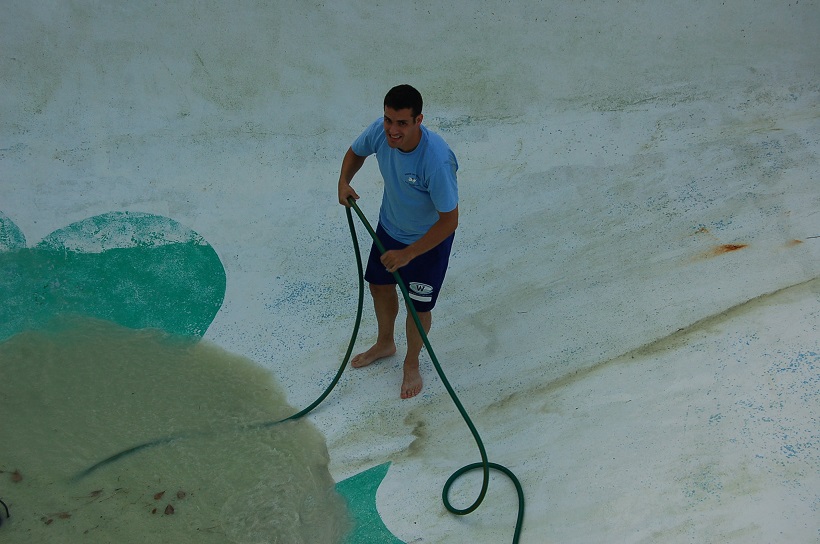
2. Make It Clean
Next, you need to make sure that the pool is clean and free of any dirt and debris. Take time to remove all the grime and make sure that the walls and floor are clean too. It’s best if you take to the pool with a sponge and cleaning solution to ensure thoroughness.
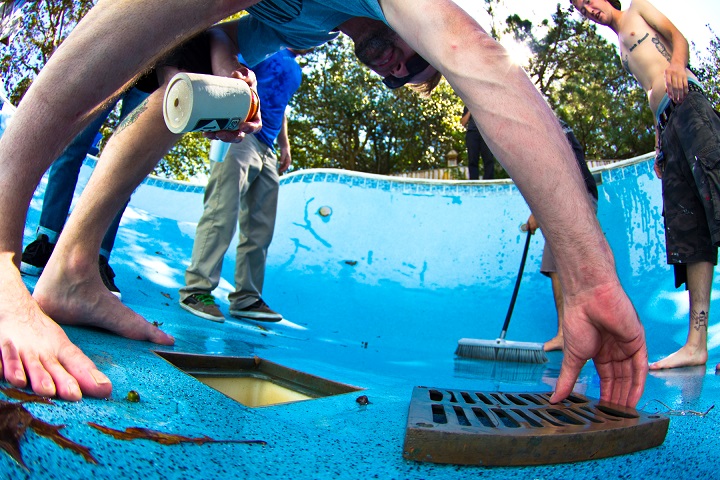
3. Identify The Problem Areas
Not all portions of your pool are going to face the same amount of damage. So make sure you identify the areas that are in extreme need of a new plaster job. Once you do that, you’ll be sure about the amount of work that awaits you.
Also, remember to pay extra attention to the edges and corners of your pool, as they tend to get chipped and damaged more than the other regions. Keep a chisel handy so that you can peel away the loose plaster easily.
4. Take Care And Sand Well
Sanding is one of the more critical and perhaps time-consuming parts of the replastering process. But it is indispensable, so you need to do it nonetheless. Take extra care when sanding and invest time to smoothen all surfaces. This ensures that the surfaces of your pool are ready for the next step in line.
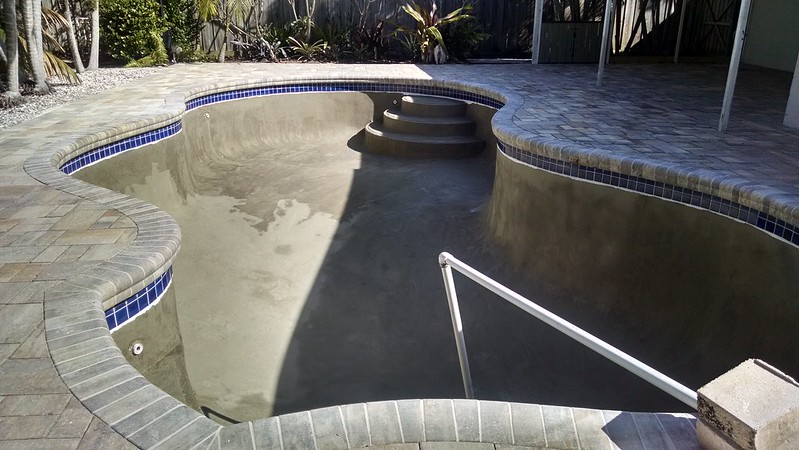
Which is to…
5. Acid Wash The Surface
After completing sanding, you now need to wash the pool surfaces with acid to remove any rough patches that may have escaped the sanding process.
Be careful when you do this, though, and take extra care to wear protective gear. Also, use an acid brush to spread the stuff evenly over the surface as this will prepare it to accept new plaster.
6. Apply A Bond Coat
Done with the acid wash?
Good, now put that water hose to good use and rinse away the surfaces. Then, after giving them ample time to dry, apply a bond coat that prepares the base for accepting the plaster. Allow it some time to dry properly.
7. Apply The Plaster
Finally, it’s time to apply the actual plaster. You’ll likely find manufacturers’ instructions on the plaster container, and you’ll have to follow the same to prepare the plaster for application.
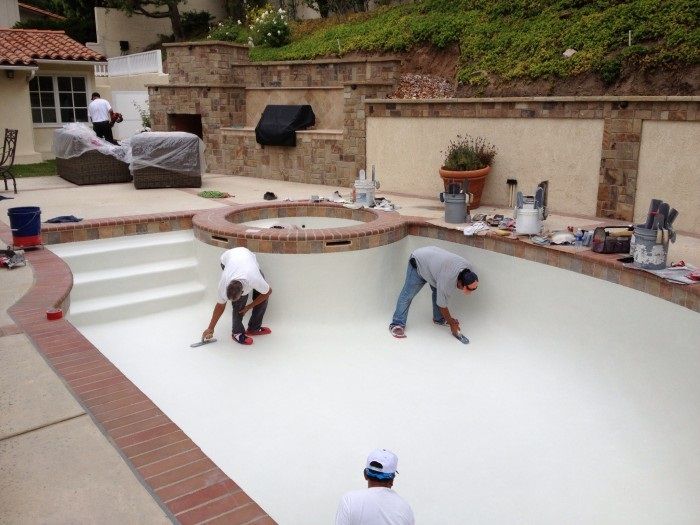
After the plaster is ready, you need to use a trowel and apply it. It’s best if you begin at the deeper end of the pool, and take it from there. Also, ensure that you apply the plaster evenly. Be sure to fill in all cracks or holes, and take time to get an even surface. After you are satisfied, allow the plaster to dry.
8. Paint If You Want
At last, you can now apply a coat of paint to the newly applied plaster coating. Take extra care to cover the entire surface, and use an even layer to ensure a smooth finish. Now, let the paint dry.
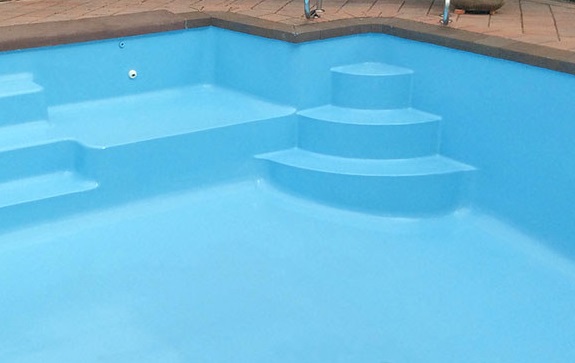
After you’ve done this to your satisfaction, you can fill the pool with chlorinated water and take a dip to enjoy the fruits of your labor.
A Word Of Caution
Replastering your pool can be rewarding if done correctly. But be prepared because replastering a pool is not an easy task. Not only do you have to deal with several unfamiliar instruments and materials, but the process is also time-consuming and demanding to a huge degree.
There are a large number of variables to consider, and one simple mistake could cost you the entire job. So make sure to do your due diligence and then proceed with the task.
And if you think the job is best left to the pros….
Conclusion
Call Valley Pool Plaster! We are the perfect and reliable partners for all types of pool replastering work. With us, you don’t have to worry about satisfaction, because it comes guaranteed when you give us a job to do.
So just pick up that phone and give us a call. We are ready to prepare your pool just the way you like it.
